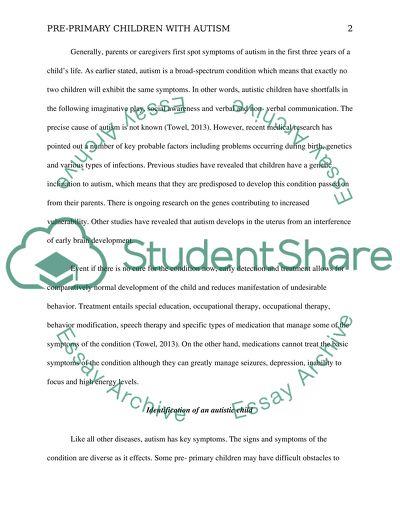Cite this document
(“Autism Essay Example | Topics and Well Written Essays - 3250 words”, n.d.)
Retrieved from https://studentshare.org/nursing/1484686-autism
Retrieved from https://studentshare.org/nursing/1484686-autism
(Autism Essay Example | Topics and Well Written Essays - 3250 Words)
https://studentshare.org/nursing/1484686-autism.
https://studentshare.org/nursing/1484686-autism.
“Autism Essay Example | Topics and Well Written Essays - 3250 Words”, n.d. https://studentshare.org/nursing/1484686-autism.


